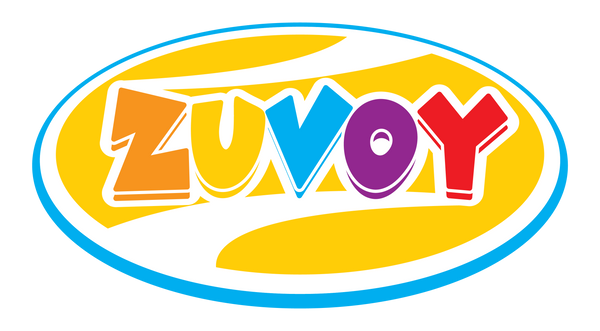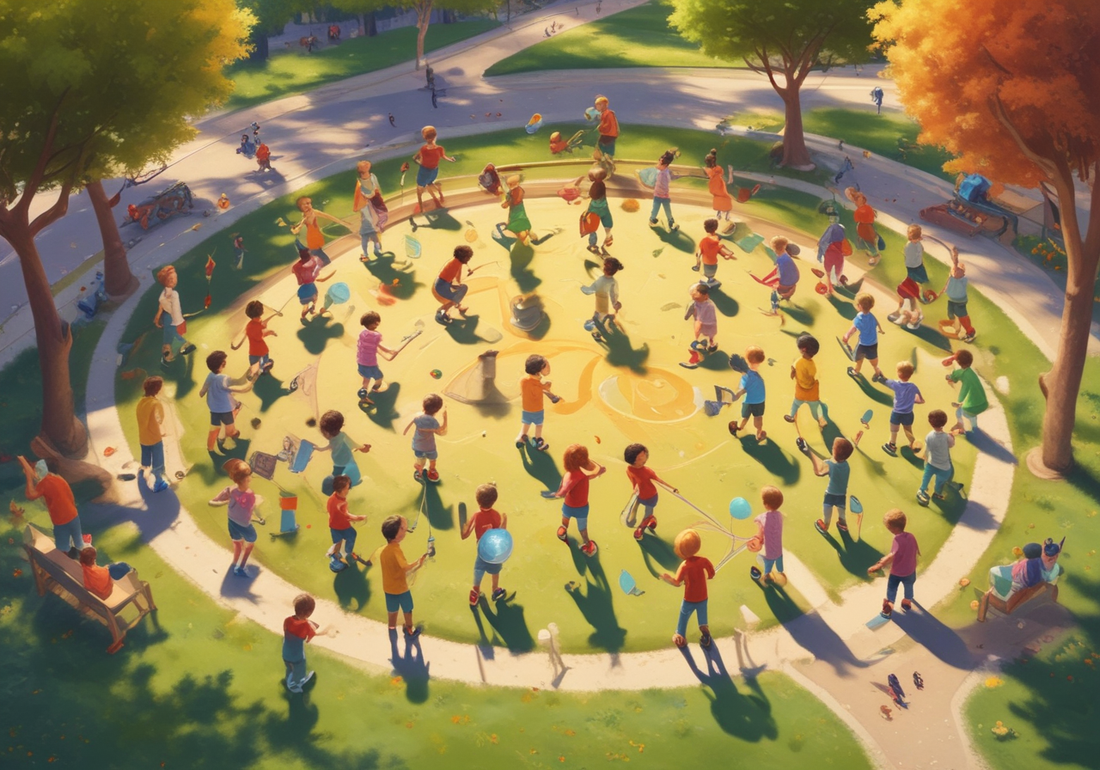Key Highlights
- Unstructured play fosters problem-solving skills by encouraging children to figure out solutions independently and creatively.
- Encourages critical thinking and cognitive development, helping children understand and tackle challenges.
- Enhances creativity and imagination through activities like pretend play and use of open-ended materials.
- Develops social and emotional skills, teaching kids empathy, sharing, and emotional regulation during playtime.
- Supports physical health by promoting active play such as climbing, running, or balancing.
- Nurtures resilience and confidence by helping children overcome obstacles and take on challenges at their own pace.
Introduction
Unstructured play is one of the main building blocks for a child’s development. But many times, it can be overlooked because of today’s busy schedules. This kind of play happens when kids are free to explore, with no set rules and no adult intervention. Unstructured play helps children build important life skills. When kids take part in imaginative activities, active play, and make their own choices, they learn how to solve problems, think in new ways, and use critical thinking.
This kind of play also helps a child’s social interaction. Kids learn to work with others and handle their feelings better. All of this leads to healthy development, giving them a solid base as they grow up.
Understanding Unstructured Play and Its Importance
 Unstructured play, also called free play, is when a child leads the activity. There are no rules made by adults and no specific objectives. The child gets to decide what to do. This freedom lets them use their creativity and make choices for themselves. They can do things at their own pace and learn new skills as they go.
Unstructured play, also called free play, is when a child leads the activity. There are no rules made by adults and no specific objectives. The child gets to decide what to do. This freedom lets them use their creativity and make choices for themselves. They can do things at their own pace and learn new skills as they go.
Unstructured play is very important. It gives children a chance to think on their own and try out new ideas. They can practice social skills, build up their mind, and help with their emotional development. These things are all needed for kids to grow up well.
What Defines Unstructured Play?
Unstructured play is a kind of play where children take the lead and follow their natural feelings, with no strict rules or set times. This can be active play, like running around outside, or pretend play, like acting out scenes. Unstructured play helps grow creativity and decision-making skills.
A key part of unstructured play is that kids make their own choices. They might use couch cushions to build a castle or pretend they are sailing a ship. This sparks the imagination and helps with problem-solving. In this kind of play, there is no adult telling them what to do or how fast to go. Children get to set the pace, which lets them learn and have fun in their own way.
Pretend play also plays a big role. When kids act out different roles, they learn things like empathy, teamwork, and how to get along with others. This style of play lets kids control what’s happening, which helps with emotional development. Because of this free and happy space, children can use their creativity with no worries and get life skills they will need later on.
Differences Between Structured and Unstructured Play
Structured and unstructured play each do different things, using different ways to help kids grow. In structured play, an adult is in charge and sets the rules and specific objectives. The goal often is to learn or get better at something, like in team sports or music lessons. In unstructured play, kids get to make their own choices and move at their own pace. This helps them use their creativity and try out new ideas on their own, without someone telling them what to do.
The difference can be seen in this table:
|
Feature |
Structured Play |
Unstructured Play |
|---|---|---|
|
Direction |
Adult-led |
Child-led |
|
Objective |
Clear goals, like skill mastery |
Flexible, creative exploration |
|
Skill Development |
Focused on specific abilities |
Broad cognitive and emotional growth |
|
Examples |
Playing soccer with rules |
Making a fort out of cushions |
When the two types of play are used together, they help kids get a good mix. The kids can reach goals and gain new skills, and also enjoy their own growth, time, and experimentation. They learn things from both ways of playing.
How Unstructured Play Nurtures Problem-Solving Skills
 Unstructured play is a powerful tool that helps kids get better at solving problems. When children face challenges during free play, like trying to build a sturdy LEGO tower, they use critical thinking to figure things out. They also use other brain skills while doing this.
Unstructured play is a powerful tool that helps kids get better at solving problems. When children face challenges during free play, like trying to build a sturdy LEGO tower, they use critical thinking to figure things out. They also use other brain skills while doing this.
This kind of play helps kids learn on their own. As they try new things and make their own choices, they get better at adapting, not giving up, and dealing with problems between people. When children beat these small problems, it gets them ready to handle real-life issues as they grow up.
Encouraging Critical Thinking Through Open-Ended Activities
Open-ended activities play a big part in helping children grow their critical thinking skills. When you let kids use their own devices and let them try new things through experimentation, they often solve problems on their own. This process helps children grow and learn in new ways.
Some easy ways to help kids build critical thinking are:
- Give them art supplies, such as crayons and paper. These let kids get creative and think in new ways.
- Encourage them to play with building blocks or LEGO sets. Kids can organize and build different things, which grows their minds.
- Offer puppets and other role-play toys. These help with decision-making and let children act out real-life situations.
- Ask open-ended questions, for example, “What can you make with this?” or “How will you get to the answer for this problem?”
When children use their time with these unstructured tasks, parents give them chances to work their minds. It helps kids to make their thinking better, adjust to new things, and face challenges with confidence.
Fostering Creativity and Imagination in Everyday Play
Everyday play is a great way to help kids grow their imagination and to be creative. These are important traits for them as they grow up. With creative play, children get to try out new things and act on their own ideas without anyone telling them what to do.
Parents can help their kids enjoy imaginative play by:
- Using artwork like painting or drawing, where kids can show their own ideas and what they feel.
- Letting children turn normal things, like couch cushions or even cardboard boxes, into anything they want, like castles or spaceships, or something else from their minds.
- Giving them dress-up clothes so they can pretend to be all kinds of people, such as an explorer or a teacher.
- Sharing natural materials, for example, leaves and rocks, for kids to use in outdoor games and fun stories.
All of these activities help to build up a child’s brain and their feelings. They also let kids make up their own stories. When kids use creativity often in their play, they start to trust themselves more and get better at thinking of new ideas.
Conclusion
Unstructured play is more than just having fun. It is an important part of a child's growth. This kind of play helps kids get better at solving problems. When children do things on their own, they learn how to handle challenges. They start to think in new ways and use their creativity.
Letting kids have the freedom to try open-ended activities gives them the tools to deal with real life. As parents and caregivers, it is important to make a space where this type of play can happen. This helps children grow stronger and more flexible when life does not go as planned. The things they learn now will help them later.
If you want tips on how to make more time for unstructured play at home or want advice, feel free to reach out and get some help!
Frequently Asked Questions
Why is unstructured play crucial for children’s development?
Unstructured play is very important for kids as it helps with how they think, move, and stay healthy. This kind of play does more than just help the body. It also helps children become more creative and builds their emotional intelligence. Kids learn to deal with tough times and bounce back, which means they grow stronger. Unstructured play also gives children the time to solve problems and sets them up for healthy growth in life.
How can parents in India support unstructured play at home?
Indian parents can help kids have unstructured play by making a safe space. Let your child use art supplies, and keep screen time low. You can also ask them to build a fort with things from around the house. All of this can help kids enjoy creative play.
Does unstructured play help with social skills as well?
Yes, unstructured play is great for building social skills. When children play with friends or brothers and sisters, they learn to understand feelings and how others feel. This helps grow their emotional intelligence and empathy. During play, kids need to solve problems, talk about the rules, and work things out together. These ways of social interaction help them see what others feel and think. It can also help them get better at talking with others.
Are there any recommended unstructured activities for different age groups?
Unstructured activities can be different for each age group. Toddlers like to play with building blocks. They also have fun pretending to be people or animals. For preschoolers, playing tag is good because it helps them move and run. Older children may want to use puppets. They can also use materials to make up their own stories and get creative.
How much time should children spend on unstructured play daily?
The American Academy of Pediatrics says that children should have at least one hour of unstructured play each day. Adding unstructured play to every day helps kids get resilience, be creative, and build skills that are good for a child’s development. You only need a little time each day. You can have unstructured play in the backyard or living room, and that is just right.

